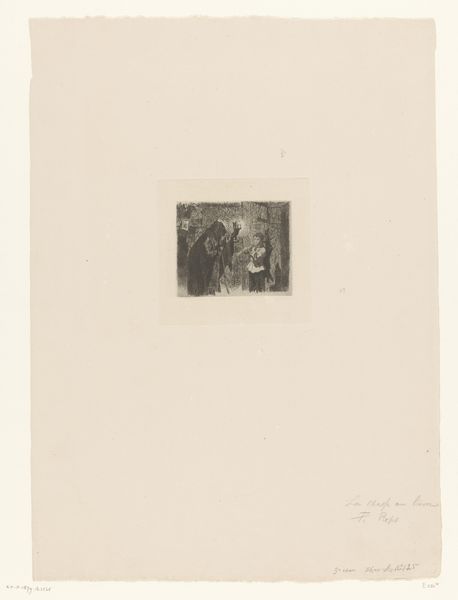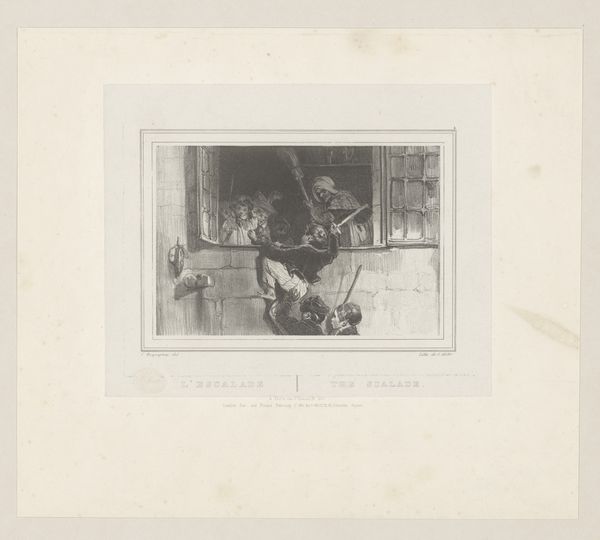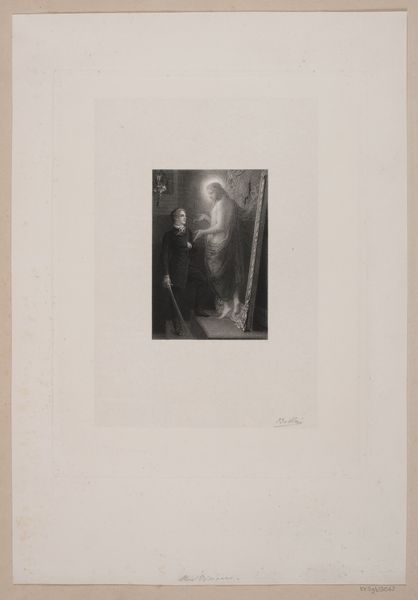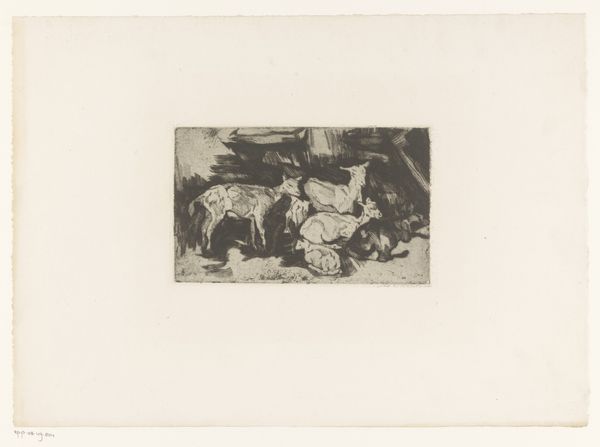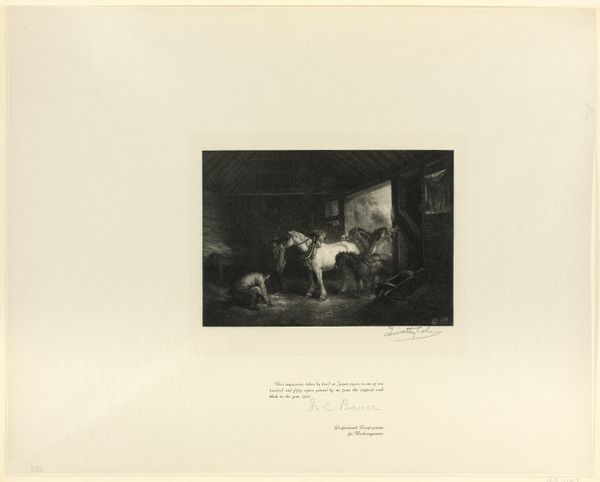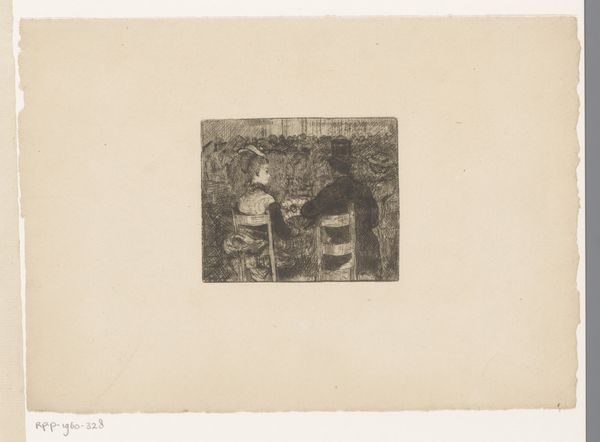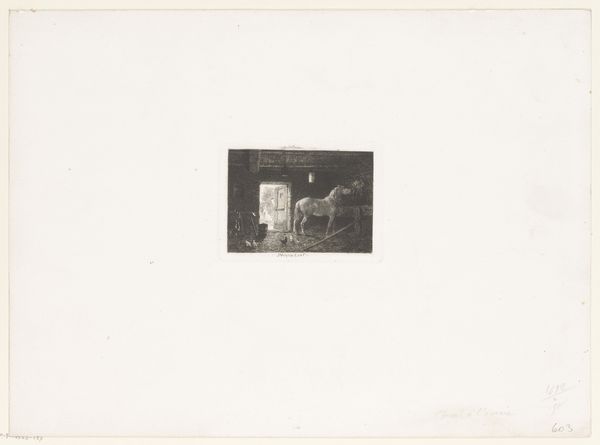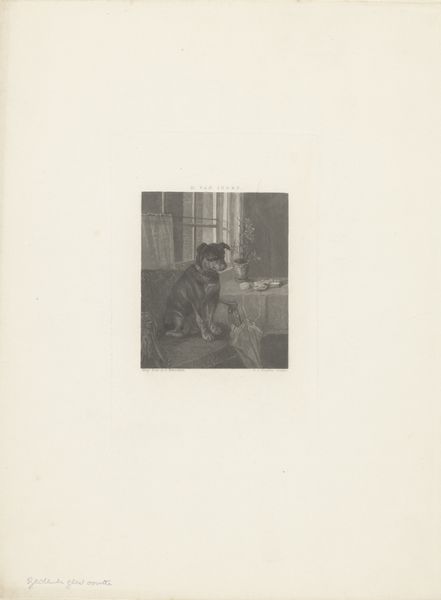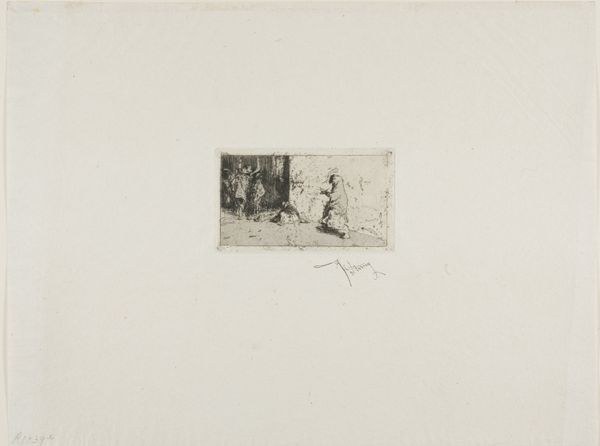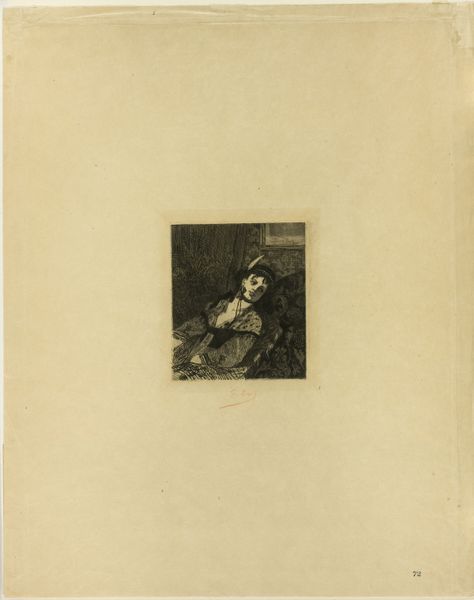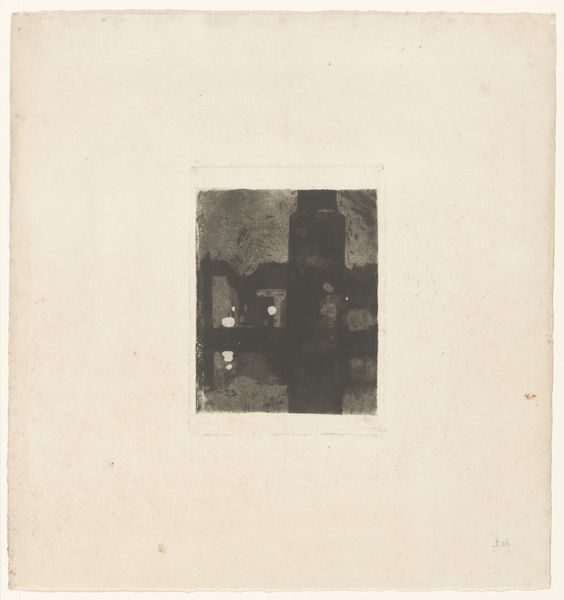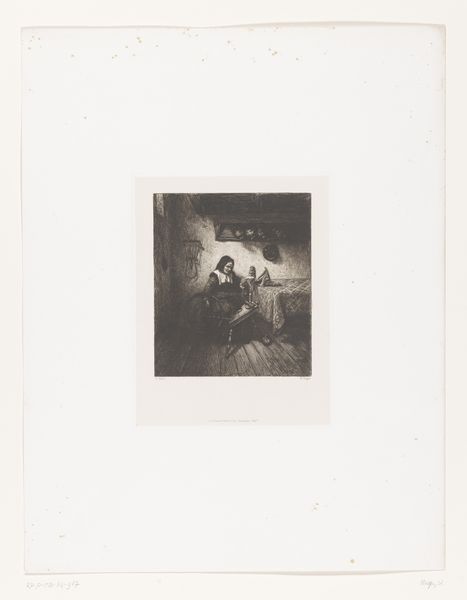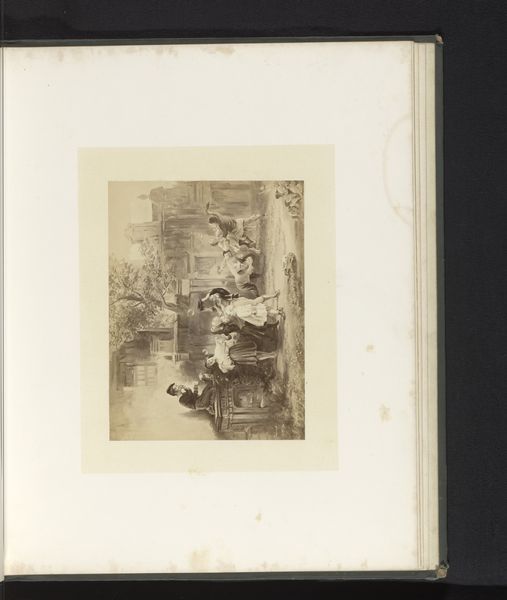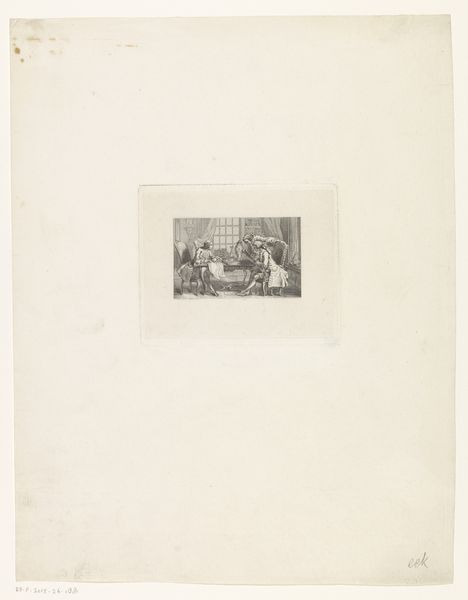
drawing, print, etching
#
drawing
# print
#
etching
#
genre-painting
#
realism
#
monochrome
Dimensions: height 99 mm, width 139 mm
Copyright: Rijks Museum: Open Domain
Curator: Looking at "Praying Figures Before a Chair," an etching from 1843 by Charles Jacque, I immediately feel this deep well of hushed reverence. The soft light seems to cradle these figures... It almost feels like a secret shared between them and the infinite. Editor: Reverence, perhaps. But my first thought veers toward the economic conditions which dictate a life lived on its knees, perpetually petitioning. That etching—it speaks to the materials used in production. Why etching specifically? What level of labor does the artist, Jacque, commit to this image, and who consumes it? Is it mass-produced or intended for a wealthier audience? Curator: It's so easy to jump to conclusions about class. Doesn't the act of prayer transcend socio-economic boundaries? Look at their postures; so open, so vulnerable. There’s something profoundly intimate in their shared ritual. Perhaps that’s the comfort it offers—a collective reaching towards something beyond our material concerns, which are also on their knees. Editor: Collective indeed, but it is necessary to analyse the labor embedded within their spiritual lives. Etching requires very particular material—acids, plates—often mined and processed under grueling conditions. Even their devotion has material and labour entangled with its very creation! Also, a domestic scene like this feeds directly into Realism's popularity: we see the common people as subjects to be admired— or critiqued for political means. It's always a cycle of viewing, purchasing and understanding the subject within a system of economics. Curator: But the focus! See how deliberately Jacque composes their figures; drawing our gaze towards the divine via this little wooden chair as conduit… and what, a broken bit of vase perhaps? There's a still life feel in addition to a kind of spiritual longing— a conversation is occuring on different planes and is available only to a contemplative soul... Editor: Broken vase and discarded objects serve a specific material purpose - highlighting what’s left after resource depletion within working-class life during that time period; items repurposed rather than simply disposed off, suggesting that these figures do what is necessary with what exists or left! It underscores how resourcefulness became paramount when survival becomes dependent upon ingenuity due a shortage of financial resources from an elite which keeps the social hierarchies intact. It almost makes it look as if though these are the last people and last items on earth and still managing, praying, working.. praying.. Curator: So moving— such bleak beauty coming out of their humble prayer—the piece as a whole captures our focus both as an aesthetic experience within human relationships during struggles and triumphs but simultaneously provokes self-reflection as well to bring light towards our perception on the sublime as an artistic moment where reality blends. Editor: Yes exactly; whether intended or accidental by products result when artwork presents human's most private experiences onto objects within capitalist landscapes — this gives insight upon culture itself being inseparable.
Comments
No comments
Be the first to comment and join the conversation on the ultimate creative platform.
